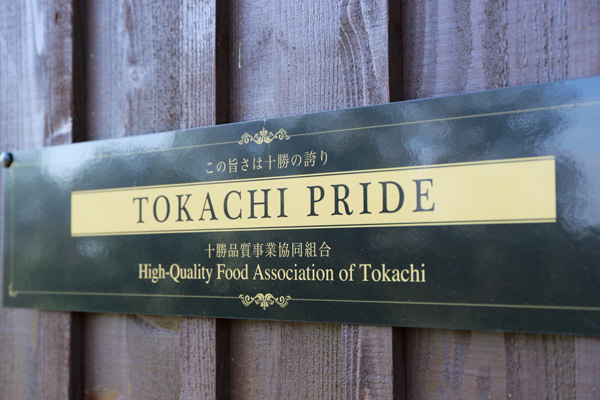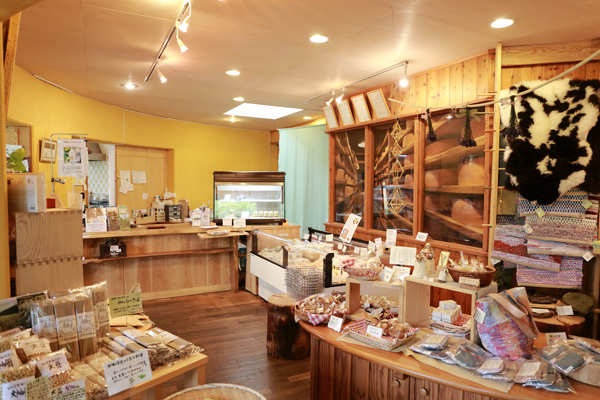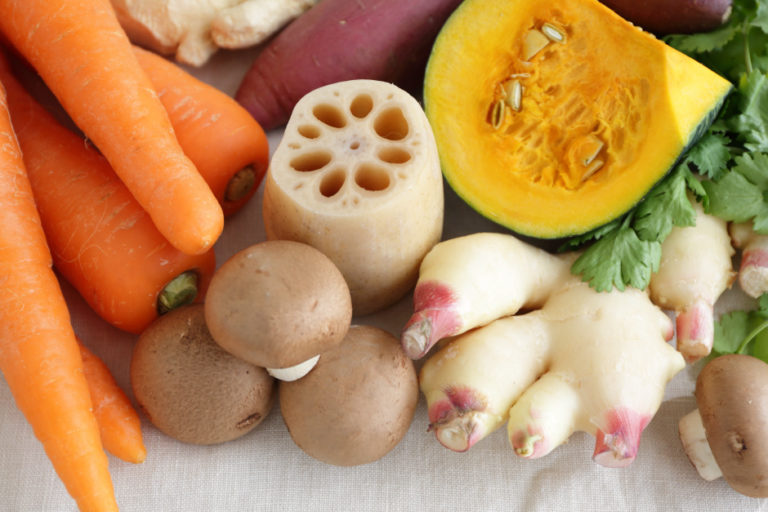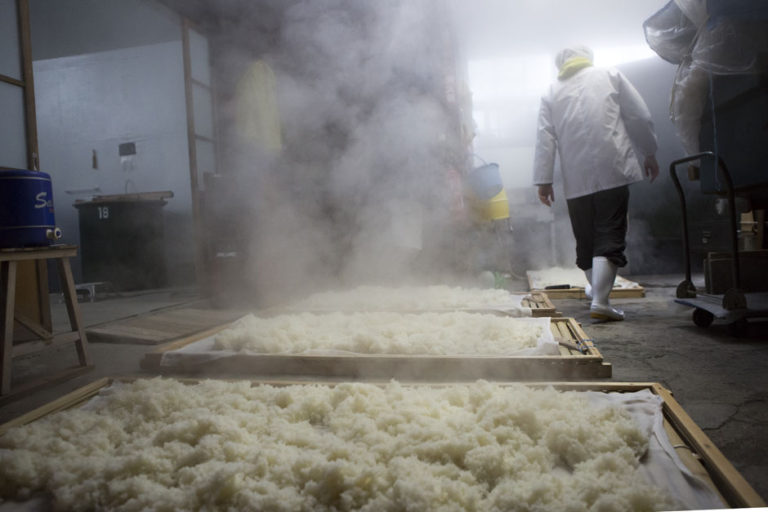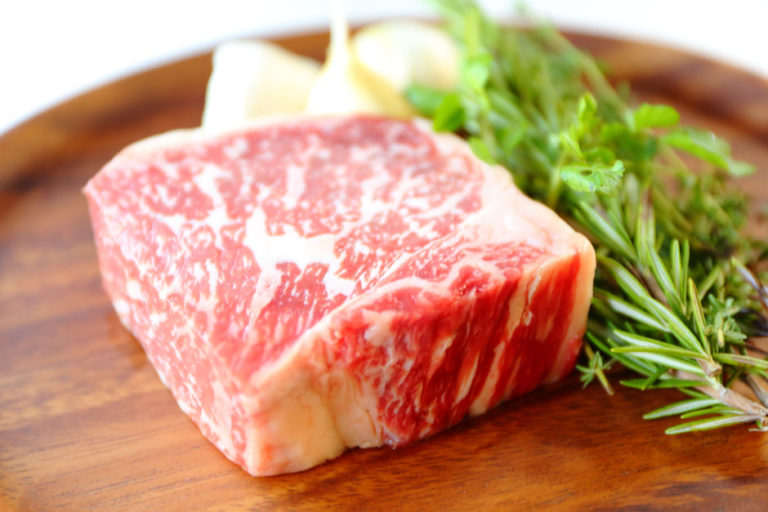Specialty Raclette Produced by Tokachi Cheese Manufacturers
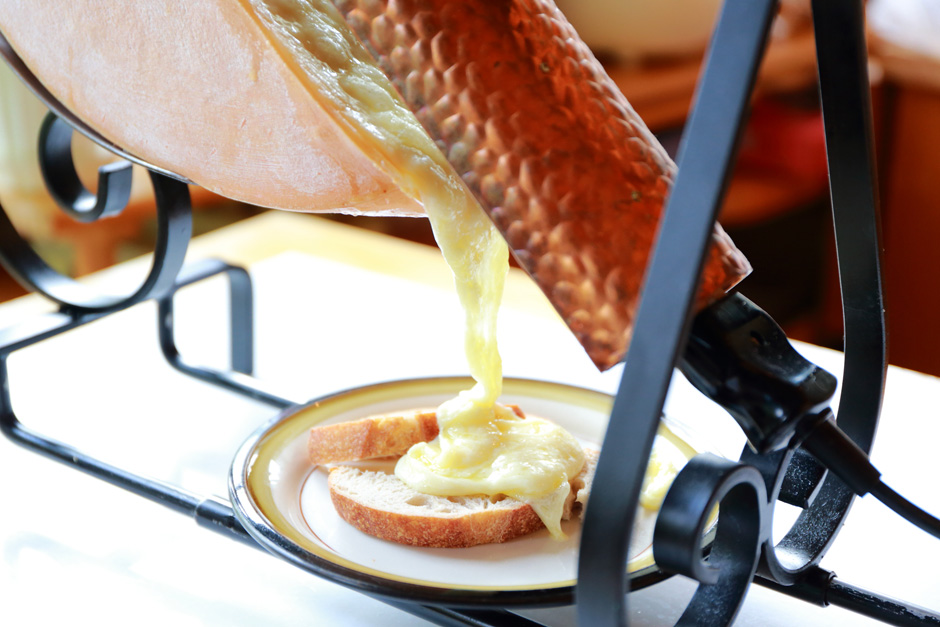
The Tokachi region in Hokkaido leads the way for raclette production. The vast plain, low humidity and climate with large temperature fluctuations are very similar to Europe, where large quantities of cheese are produced. Thanks to being blessed with this ideal environment, Tokachi’s cheese production is continuing to evolve.
Raclette unique to Tokachi, created by like-minded peers
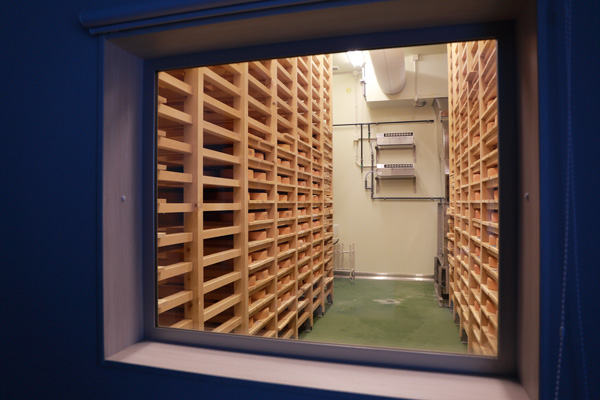
A new movement is about to launch Tokachi’s cheese production. It was triggered by Tokachi Quality Business Co-Op, launched in 2015. Together with multiple cheesemakers in Tokachi, and with the mission to spread Tokachi’s cheese as a global brand, the co-op has developed an integrated raclette brand Tokachi Raclette Moor Wash.
Collected from each cheesemaker, the pre-maturation cheese is centrally managed in a shared cheese maturation cellar. During the maturation process, it is polished with “moor spring” water that comes naturally from Tokachi’s deep underground and becomes more aromatic and milder than usual. The brand name Moor Wash comes from this unique technique.
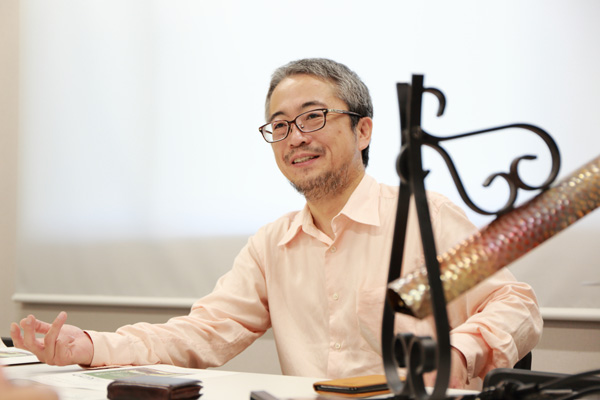
“We started running the maturation cellar together, inspired by French dairy farms’ production system. We have about 40 cheesemakers in Tokachi. They are all small and do not produce large quantities. But if we share the brand and facilities, we can keep our supply stable and minimize risks”
Yoji Shimosato says , the head of the co-op’s administrative department. He is also one of the key people who established the brand. To expand Tokachi cheese’s sales channel and to promote the cheese, Shimosato constantly visits various regions.
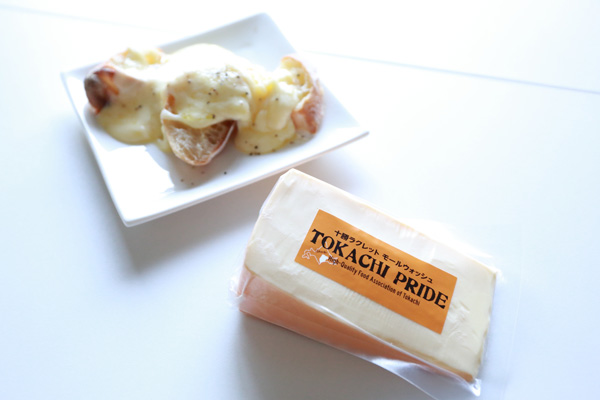
Right now, six cheesemakers are using the maturation cellar. Even though there is a shared manufacturing recipe for the brand owners, there are slight differences among cheesemakers in the cheese’s finish. The co-op decided to see this as each manufacturer’s character and a selling point for the brand.
“Though we do have a certain standard taste for the brand, some manufacturers make aromatic cheese, and others make them lighter. We just need to know each manufacturer’s character and deliver their products to the right places and consumers. That is the co-op’s job. With Tokachi Raclette Moor Wash making inroads, we hope to spread the tastes of Tokachi throughout and outside Hokkaido.”
Kyodo Gakusha Shintoku Farm, the leading player for Tokachi cheese
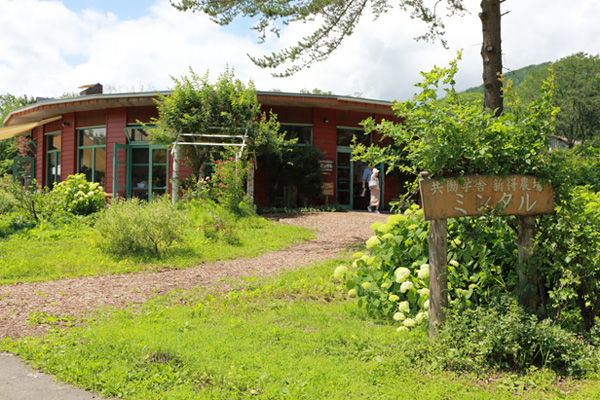
Tokachi Raclette Moor Wash has a unique and delightful flavor and aroma, but Kyodo Gakusha Shintoku Farm’s raclette is especially known to have a rich flavor that is sure to make even cheese experts express their delight.
The farm is located in Shintoku Town, and it started making cheese in 1983. From the beginning, it has employed physically and mentally disabled people and people with social challenges, as part of its social welfare activities. However, as the farm employed more people, it began to struggle financially. At the time the farm was mostly selling milk, but it had to create new business survive. The farm then decided to go for cheese. We interviewed Nozomu Miyajima, who represents the farm, to ask about that time.
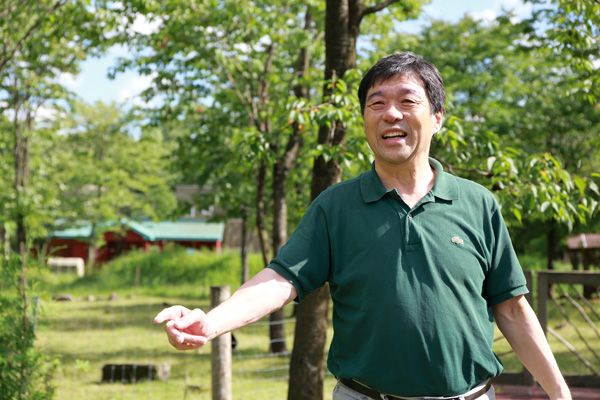
“We employ physically and mentally disabled people, so automation and operating efficiently are difficult. Low-temperature pasteurized bottled milk, ice cream and yogurt are sometimes really popular and sometimes not and will not be stable enough for our staff. That is why we thought cheese would be best, because even workers who take more time can produce cheese.”
Even if it takes a disabled person several years to acquire sufficient skills, those skills could become obsolete with the passage of time. Conversely, there will always be demand for cheese so that was the only option left for Kyodo Gakusha Shintoku Farm.
The ultimate secret of cheese production: “Don’t carry milk”

To make cheese, Miyajima introduced six Brown Swiss cows and grazed them. Apparently their milk turns into rich and sweet cheese, and also yields 20% more cheese than the same amount of Holstein milk.
In 1989, Miyajima invited Jean Hubert, a giant in the French cheese industry, to ask for some manufacturing guidance. Asked “Which kind of cheese should we produce here in Tokachi?” by Miyajima, Hubert cited raclette above anything else.
“Perhaps the reason for that is because France and Tokachi have similar climates. Another reason is because raclette is comparatively easier to make than Camembert.”
Hubert’s teaching about manufacturing was “Do not carry milk.” What did he mean by that?
“He meant two things. First, only use the milk milked at our own plant to maintain quality and safety. Second, do not use pumps or machines, because if you put the milk through a machine the milk will have more bacteria and degrade. He said it is important to bring out the milk’s best assets, without any tricks.”
Following Hubert’s teaching, the farm’s milk is sent to the workshop by naturally flowing down the slope after milking. The milking chamber and the workshop are only 20 meters apart. Because of sewage and odor issues, usually these facilities are kept more than 50 meters apart, but Miyajima cleared these issues by keeping the facilities hygienic.
Cheese created by experience and intuition
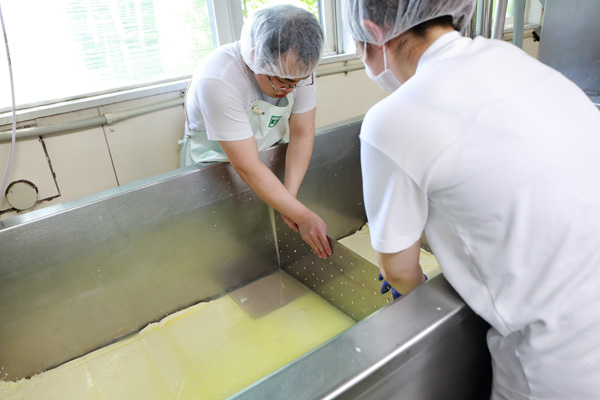
The room temperature of the raclette workshop is high. The room is engulfed in heat. Squeezed on the evening before and in the morning, the milk is pasteurized at low temperatures with a pasteurizer and matured with starters (lactic acid bacteria and other microorganisms). As enzymes begin to coagulate milk, the milk is chopped and stirred into granules. By making the size of the granules even, it is said that the resulting flavor of the cheese will be uniform.
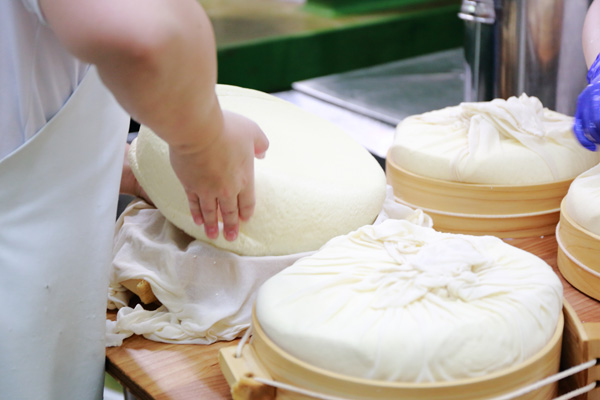
The excess moisture from stirring and coagulation is expelled, and the milk eventually becomes hard like hard tofu, a state known as curdling. The curd is sliced, each firmly fixed with a frame to mold it into a disc shape. Even after it is put into the frame the cheese keeps compressing and expelling moisture.
Most of these processes are done by hand. Turning the curd that is as heavy as six to seven kilograms, and putting it into frames requires physical strength. But the manual work keeps the milk quality steady and the human eye also helps to keep small details like fermentation and moisture levels under control.

Molded and matured overnight, the young cheese is then salted for a whole day and matured further for two more days. Once the superficial moisture is gone, it is moved to a stone maturation cellar. Finally, after three months, it is ready for shipment.
Kyodo Gakusha Shintoku Farm recognized globally
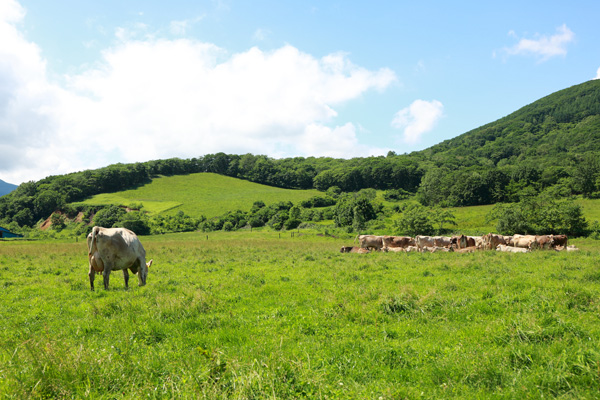
Contrary to Miyajima’s drive, it took a long time until the farm’s raclette received recognition. The turning point came in 1998, at the first All Japan Natural Cheese Contest. The farm’s raclette won the highest award.
“In the 90s, raclette was unfamiliar to Japanese people. For a few years after we started selling raclette, it did not sell well so we struggled. When we won the award, we felt we were finally rewarded for our work.”
The farm’s struggle seems to have affected the production system at its workshop. Many of the staff looks young, probably in their early 20s. When we asked them, they said they are each responsible for a certain type of cheese and each person is also responsible for managing its production.
“We let each member of the staff take care of the production. It is okay if they make mistakes, as long as they can think about why they failed and come up with a recovery plan. Of course that involves managerial risks. But that is part of making something authentic.”
The young staff are working hard, thinking hard and improving their processes to make tasty cheese. Maybe Miyajima sees a part of his youth in them.
After winning the contest, word spread quickly regarding the farm’s raclette. In 2010, its cheese won the silver prize in the washed semi hard cheese division of the World Championship Cheese Contest. After winning contests in and outside of Japan, Kyodo Gakusha Shintoku Farm began enjoying an unshaken position.
The farm has since launched many other products, including a Camembert wrapped in a bamboo leaf named Sasayuki and hard Shintoko cheese aged for over 10 months. Creamy Sakura cheese that features salted cherry blossoms won the silver medal in the 2nd Mountain Cheese Olympics in France, and the gold medal in the Cheese Olympics in Switzerland the following year. Finally the farm received recognition from traditional cheese-producing countries and its cheese is recognized globally. Today, it is a cheese workshop with people visiting from Japan and overseas to study cheese production.
Tokachi’s cheesemakers are evolving every day, pursuing the quality and value grounded in their land. They are indeed the people who are bringing Tokachi Quality Business Co-Op’s mission of “spreading Tokachi cheese as a global brand” closer to reality.

